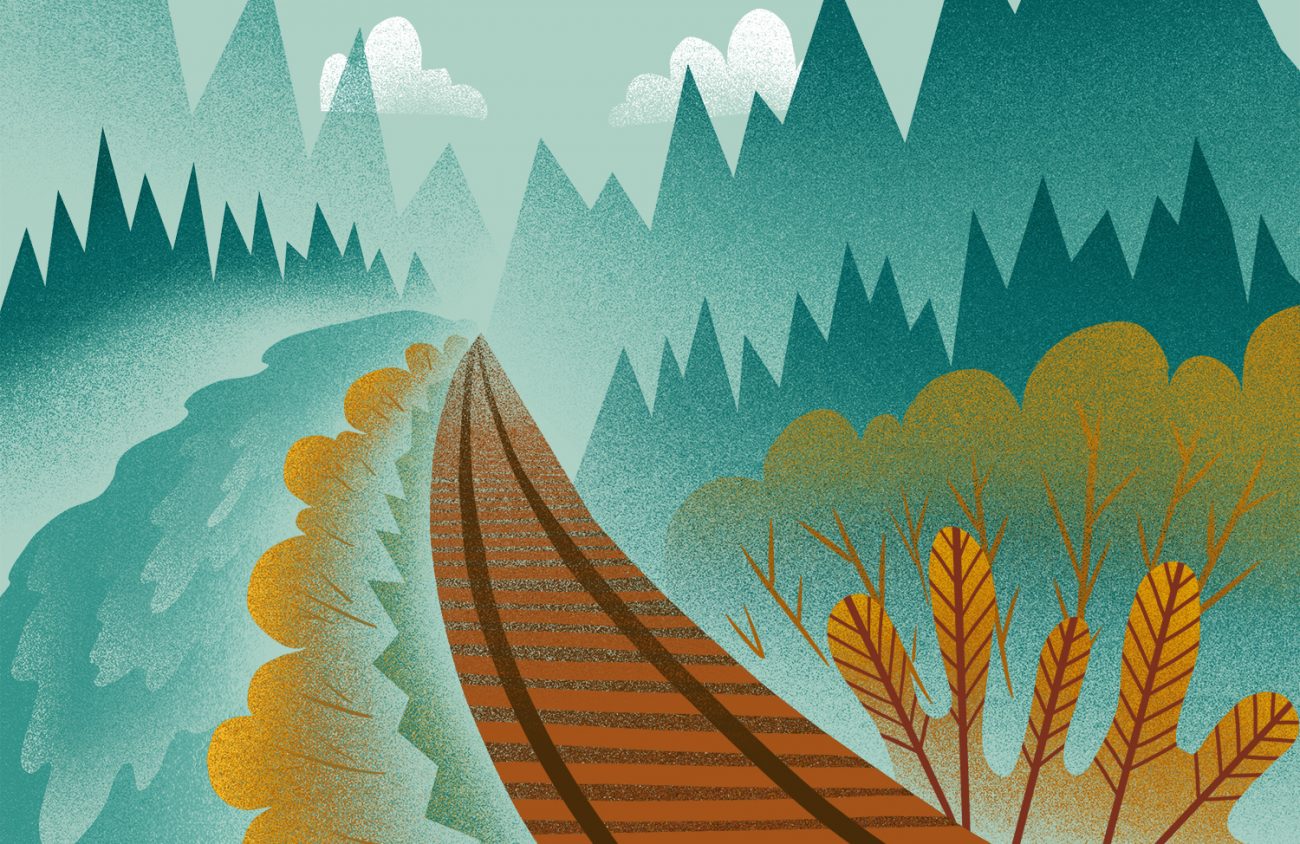My wanderlust fantasies often center on the romantic idea of train travel. I’ll spend hours online combing through information on rail passes throughout the world, envisioning weeks of journeying from city to city, reading and writing, meeting fascinating strangers, finally becoming a “real” traveler.
In reality, train travel is only romantic for people willing to shell out hundreds of dollars for sleeper cars and nightly $50 frozen steak dinners. That doesn’t mean I’m not glad to get on the train — on one very scenic six-hour ride from Eugene to Seattle, I met a man who claimed to be one of Albert Einstein’s direct descendants, and these types of characters somehow flock to trains in droves. But beyond funny story fodder, swapping out domestic flights for train rides is necessary for a sustainable future.
Since Greta Thunberg brought global attention to the environmental toll of flying with her transatlantic sailboat journey last year, there has been buzz about “flight shaming,” known as “flygskam” in Thunberg’s native Sweden, where the idea seems to have originated.
Ingrid K. Williams, a freelance writer partially based in Sweden, wrote a piece on flight shaming and train travel for the New York Times late last year. In it, she says that the anti-flight “peer pressure” in Sweden can be “palpable,” mentioning that Sweden’s air passenger numbers have decreased since 2018.
To Eugene Weekly, though, Williams says that she has already noticed less enthusiasm in Sweden for rail travel rather than flying as the news cycle perpetually marches on.
“At the end of the day, I think it all comes down to cost,” Williams writes in an email. “Trains need to be way cheaper than flying to offset the additional travel time.”
And they aren’t, especially considering how inexpensive flights have become in Europe and America. As I write this, I can find a budget round trip plane ticket from Eugene to Los Angeles for $113, a price that will fluctuate depending on the time of year, but is undoubtedly cheaper than the more than $200 round trip Amtrak ticket, not to mention about 17 hours faster.
“It’s also a privilege to spend an extra three days traveling,” Williams says. “That’s three additional vacation days that a lot of people don’t have to spare, unfortunately.”
While I resent the mentality that individual choice has any great deal of power — about 20 fossil fuel companies are responsible for the majority of climate change — I would prefer that my individual choices make me feel better about myself and the world.
So for those of us who can occasionally spare a few extra days, maybe we should, and encourage a more innovative rail travel system.
Shelley Snow, a communications coordinator for the Oregon Department of Transportation, says that she thinks the way Amtrak and passenger train companies will be able to succeed and continue to improve is if current rail enthusiasts get their friends on board.
“The regular riders are already sold. We just need to get that occasional new rider to try it for the first time,” Snow says. “The people who are fairly passionate about train travel are the people who sustain us in terms of keeping passenger rail viable.”
She says that in the past few years, passenger rail travel on the Amtrak Cascades route — from Eugene to Vancouver, B.C. — has gone up, though it is probably not related to environmentalism efforts.
“We’ve found that environmentalism won’t push people over the edge of riding,” she says. “The number one reason people take the train is to avoid traffic.”
Snow also says that when gas prices go up, train ridership does too. Other reasons people like the train: It’s much safer than driving, you can take a lot of luggage, bring small pets and you have a great view of parts of the country that you can’t view on the highway.
Train stations are eons less stressful than airports, and what is essentially a lack of security seems sort of antiquated, in a good way. They trust people.
If you decide to try out the train, whether just from Eugene to Portland or a cross-country route, I have a few tips, inspired by some of my train journeys. On my recent move from Eugene to Chicago, I took the train from Denver to Chicago, a good chunk of the trip.
Looking back, I would have chosen to travel by train across the western half of the United States instead of across the Great Plains, but I don’t regret the 18-hour trip.
However, I would encourage you to bring a pillow and snacks and beer, if you’re so inclined — no matter how much you want to see Amtrak succeed, you don’t need to be spending $10 on Stella Artois and M&Ms. Find a seat where you can stretch out, and enjoy the journey! You’re not getting anywhere fast, but that’s part of the fun.
